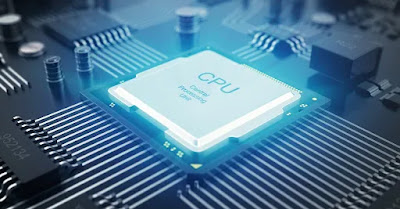CPU (CENTRAL PROCESSING UNIT)
CPU
Is a very Large topic to Discuss So Today we will cover some important thing
About CPU.
WHAT IS CPU (CENTRAL PROCESSING UNIT)?
The brain of any computer system is the CPU. It
controls the functioning of the other units and process the data. The CPU is
sometimes called the processor,
or in the personal computer field called “microprocessor”. It is a single integrated circuit that contains
all the electronics needed to execute a program. The processor calculates (add, multiplies and so
on), performs logical operations (compares
numbers and make decisions), and controls
the transfer of data among devices.
COMPONANT
OF CPU
1) Register
Set
-
It is an Electric component that is use to hold the
information As bits.
-
A Register Can be 2-bit, 4-Bit & 8-Bit Register.
-
Register uses the cell to hold the bit that is called flip-flop.
-
A processor register (CPU register) is one of a small set of data holding places that are part of the computer
processor. A register may hold an instruction, a storage address, or any kind of data (such as a bit
sequence or individual characters). Some instructions specify registers as part of the instruction.
2) Arithmetic
Logic Unit (ALU)
-
It is a digital circuit use to perform Arithmetic and
logic operation.
-
ALU is also called the core of CPU.
-
An arithmetic logic unit is a
combinational digital electronic circuit that performs arithmetic and bitwise
operations on integer binary numbers. This is in contrast to a floating-point
unit, which operates on floating point numbers.
3)
Control Unit (CU)
-
CU Directs the Operation of Processor.
-
CU work by receiving the input information that is convert
in to control signal.
-
A control unit or CU is circuitry that directs operations within a
computer's processor. It lets the computer's logic unit, memory, as well as both input and output devices know how
to respond to instructions received from a program.
TYPES
OF REGISTER
1)
MAR (Memory Address Register)
2)
MBR (Memory Buffer Register )
3)
MDR (Memory Data Register)
4)
PC (Program Counter)
5)
AR (Accumulator Register)
1) (MAR) Memory Address Register
-
In a computer, the Memory Address Register (MAR) is the CPU register that either stores the memory address from which data
will be fetched from the CPU, or the address to which data will be sent and
stored. In other words, MAR holds the
memory location of data that needs to be accessed.
2) (MBR) Memory Buffer Register
-
A memory buffer register (MBR) is the register in a computer's processor, or central processing unit,
CPU, that stores the data being transferred to and from the immediate access
store. It contains the copy of designated memory locations specified by the
memory address register.
3)
(MDR)
Memory Data Register
-
Memory Data Register (MDR) MDR is the register of
a computer's control unit that contains the data to be stored in the computer
storage (e.g. RAM), or the data after a fetch from the computer storage. It
acts like a buffer and holds anything that is copied from the memory ready for
the processor to use it.
4)
(PC) Program Counter
-
The program counter, commonly called the
instruction pointer in Intel x86 and Itanium microprocessors, and sometimes
called the instruction address register, the instruction counter, or just part
of the instruction sequencer, is a processor register that indicates where a
computer is in its program sequence.
5) (AR) Accumulator Register
-
An accumulator is a register for short-term, intermediate storage of arithmetic and
logic data in a computer's CPU (central processing unit).








0 Comments